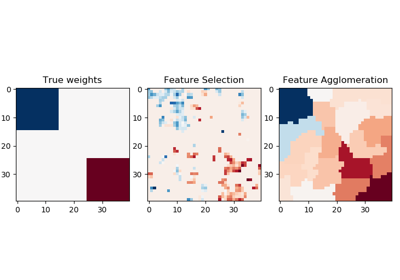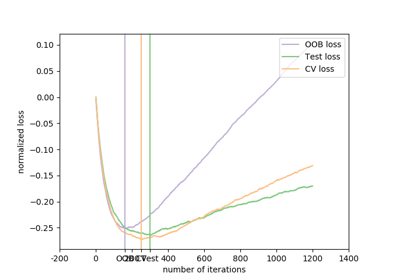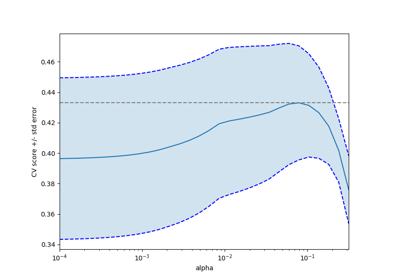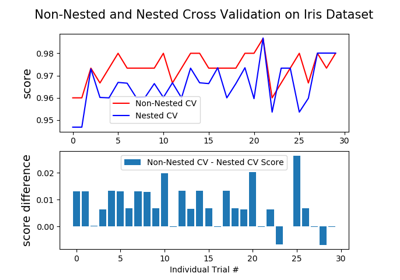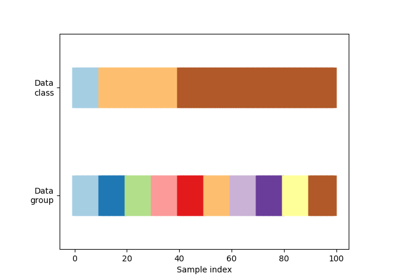sklearn.model_selection.KFold¶
-
class
sklearn.model_selection.KFold(n_splits=’warn’, shuffle=False, random_state=None)[source]¶ K-Folds cross-validator
Provides train/test indices to split data in train/test sets. Split dataset into k consecutive folds (without shuffling by default).
Each fold is then used once as a validation while the k - 1 remaining folds form the training set.
Read more in the User Guide.
Parameters: - n_splits : int, default=3
Number of folds. Must be at least 2.
Changed in version 0.20:
n_splitsdefault value will change from 3 to 5 in v0.22.- shuffle : boolean, optional
Whether to shuffle the data before splitting into batches.
- random_state : int, RandomState instance or None, optional, default=None
If int, random_state is the seed used by the random number generator; If RandomState instance, random_state is the random number generator; If None, the random number generator is the RandomState instance used by np.random. Used when
shuffle== True.
See also
StratifiedKFold- Takes group information into account to avoid building folds with imbalanced class distributions (for binary or multiclass classification tasks).
GroupKFold- K-fold iterator variant with non-overlapping groups.
RepeatedKFold- Repeats K-Fold n times.
Notes
The first
n_samples % n_splitsfolds have sizen_samples // n_splits + 1, other folds have sizen_samples // n_splits, wheren_samplesis the number of samples.Randomized CV splitters may return different results for each call of split. You can make the results identical by setting
random_stateto an integer.Examples
>>> from sklearn.model_selection import KFold >>> X = np.array([[1, 2], [3, 4], [1, 2], [3, 4]]) >>> y = np.array([1, 2, 3, 4]) >>> kf = KFold(n_splits=2) >>> kf.get_n_splits(X) 2 >>> print(kf) KFold(n_splits=2, random_state=None, shuffle=False) >>> for train_index, test_index in kf.split(X): ... print("TRAIN:", train_index, "TEST:", test_index) ... X_train, X_test = X[train_index], X[test_index] ... y_train, y_test = y[train_index], y[test_index] TRAIN: [2 3] TEST: [0 1] TRAIN: [0 1] TEST: [2 3]
Methods
get_n_splits([X, y, groups])Returns the number of splitting iterations in the cross-validator split(X[, y, groups])Generate indices to split data into training and test set. -
get_n_splits(X=None, y=None, groups=None)[source]¶ Returns the number of splitting iterations in the cross-validator
Parameters: - X : object
Always ignored, exists for compatibility.
- y : object
Always ignored, exists for compatibility.
- groups : object
Always ignored, exists for compatibility.
Returns: - n_splits : int
Returns the number of splitting iterations in the cross-validator.
-
split(X, y=None, groups=None)[source]¶ Generate indices to split data into training and test set.
Parameters: - X : array-like, shape (n_samples, n_features)
Training data, where n_samples is the number of samples and n_features is the number of features.
- y : array-like, shape (n_samples,)
The target variable for supervised learning problems.
- groups : array-like, with shape (n_samples,), optional
Group labels for the samples used while splitting the dataset into train/test set.
Yields: - train : ndarray
The training set indices for that split.
- test : ndarray
The testing set indices for that split.


